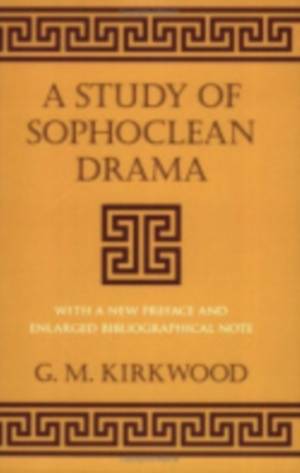
- Afhalen na 1 uur in een winkel met voorraad
- Gratis thuislevering in België vanaf € 30
- Ruim aanbod met 7 miljoen producten
- Afhalen na 1 uur in een winkel met voorraad
- Gratis thuislevering in België vanaf € 30
- Ruim aanbod met 7 miljoen producten
Omschrijving
Although many commentators have dealt with various aspects of structure in Sophoclean drama, G. M. Kirkwood contends that "Sophocles' mastery of dramatic form is accepted with casual and superficial deference rather than fully and clearly understood." This book shows how Sophocles' method of presenting character, his unique handling of myth, his predilection for presenting ideas by comparison and contrast, and his principles of structure are so closely related that they serve to clarify each other.
In an analysis of the form of Sophocles' seven extant plays, Kirkwood demonstrates the existence of several deliberate and distinct types of dramatic construction. Sophocles' use of the chorus, his irony, and certain aspects of diction are considered as a part of his dramatic art and as elements of structure. Kirkwood discusses a number of traditional problems, among them questions of consistency and meaning in passages from Ajax, Antigone, and Electra. He also considers the problem of "diptych" structure, and shows that it is a definite dramatic shape, of primary importance in understanding the three plays in which it appears.
Distinctive Sophoclean concepts in which the words eugenes and daimon are conspicuous, the meaning of tragedy in relation to Sophocles' plays, and Sophocles' outlook on deity and on man and his fate are also subjects of illuminating discussions. This book offers ample evidence to support Kirkwood's contention that, "Only when we inquire into the means by which Sophocles invests his plays with their constant air not only of relevance but of immediacy do we begin to understand Sophoclean form."
For the paperback edition of this classic study of Sophoclean poetics, the author has written a new preface that assesses the reception of his work and has updated the bibliography to include more recent scholarship.
Specificaties
Betrokkenen
- Auteur(s):
- Uitgeverij:
Inhoud
- Aantal bladzijden:
- 328
- Taal:
- Engels
- Reeks:
- Reeksnummer:
- nr. 31
Eigenschappen
- Productcode (EAN):
- 9780801482410
- Verschijningsdatum:
- 15/12/1994
- Uitvoering:
- Paperback
- Formaat:
- Trade paperback (VS)
- Afmetingen:
- 152 mm x 226 mm
- Gewicht:
- 476 g

Alleen bij Standaard Boekhandel
Beoordelingen
We publiceren alleen reviews die voldoen aan de voorwaarden voor reviews. Bekijk onze voorwaarden voor reviews.









